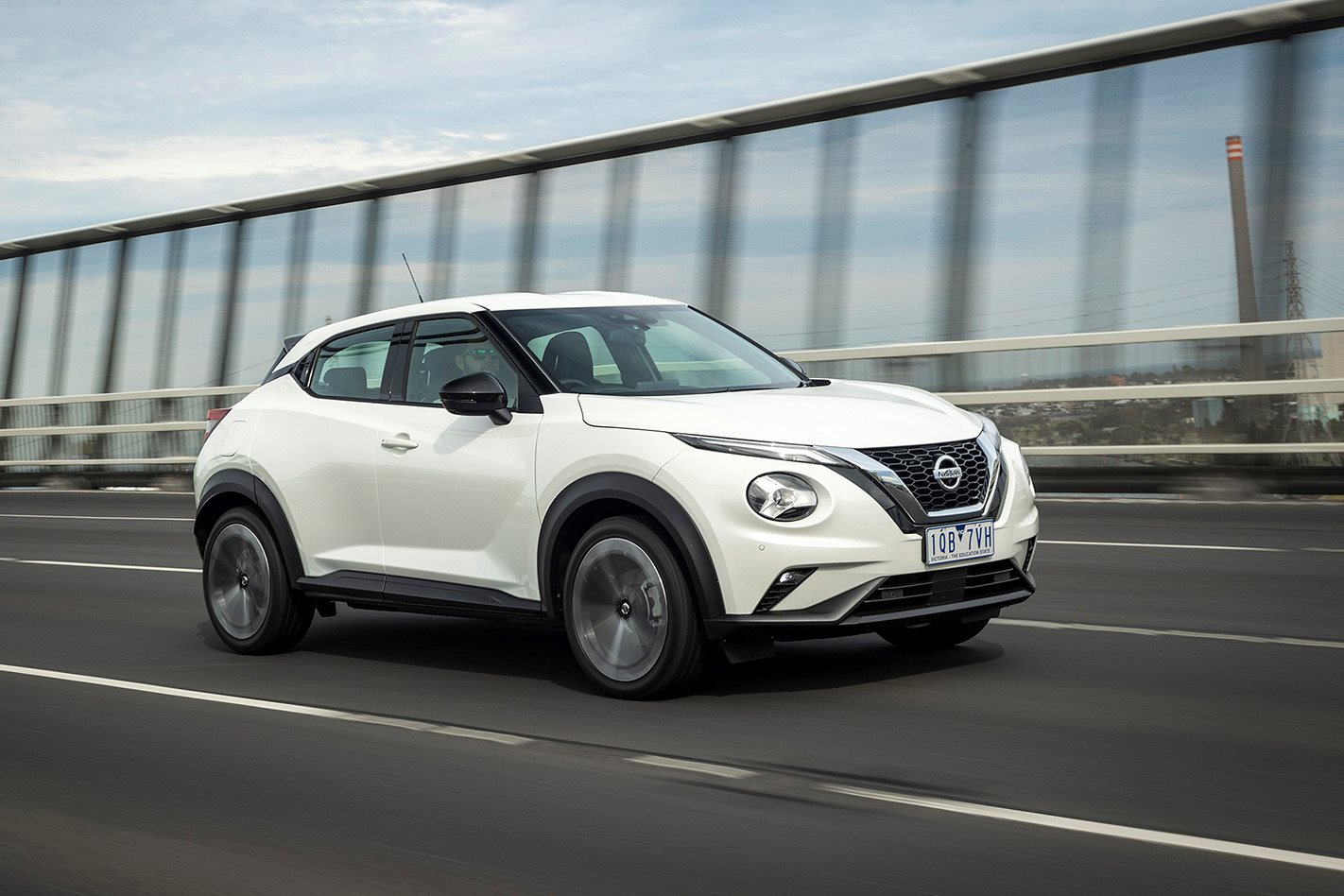
Score breakdown
Things we like
- Standard equipment, big boot, fresh looks, fun handling
Not so much
- ST-L and Ti's bulky front seats limit rear space, dozy gearbox calibration
What stands out?
The stylish second-generation Nissan Juke compact SUV comes with a fuel-efficient 1.0-litre turbocharged engine and a broad range of active safety features as standard including autonomous emergency braking. It has a relatively spacious, well-presented interior and excellent infotainment including Android Auto/Apple CarPlay smartphone mirroring.
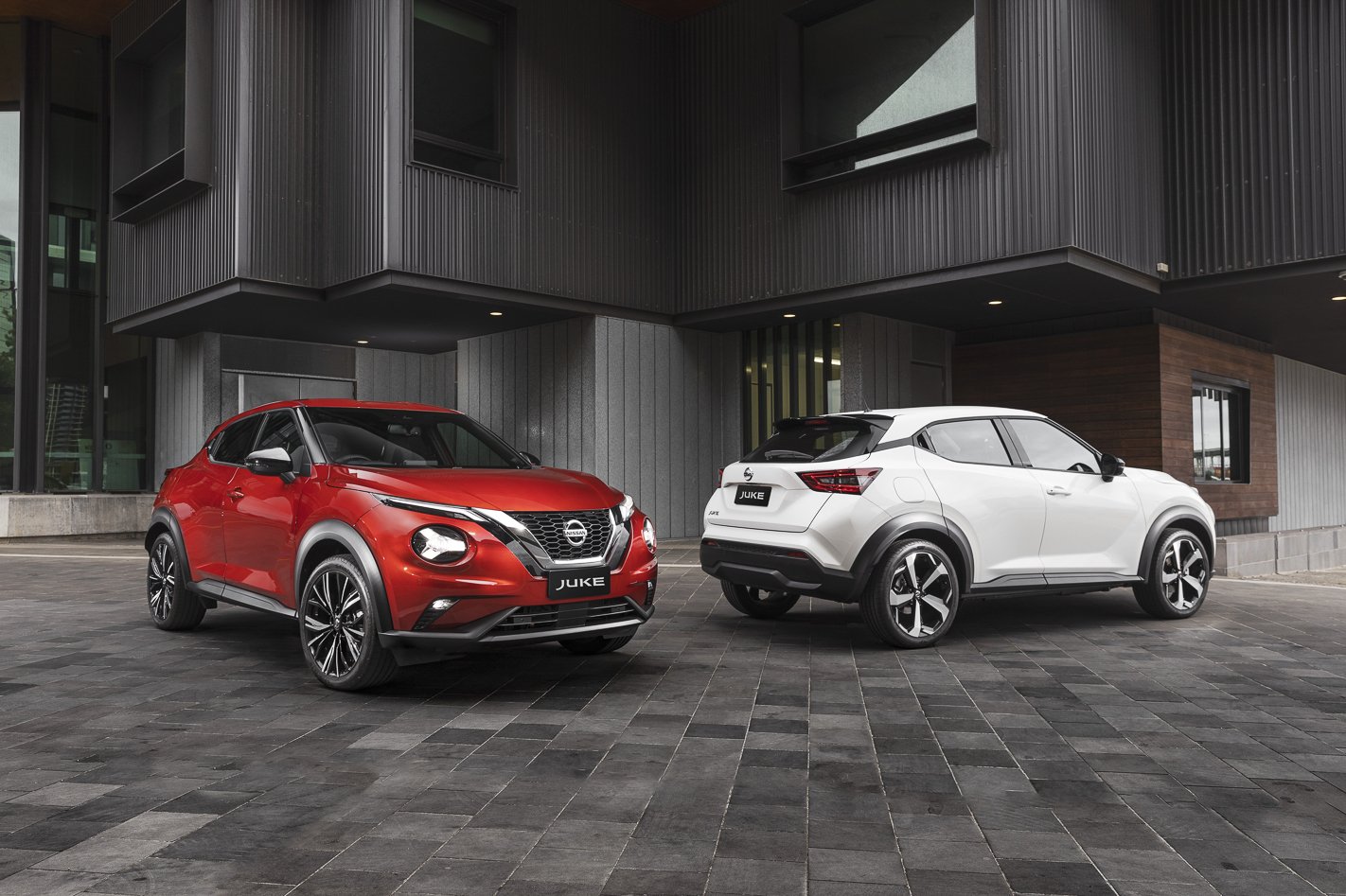
What might bug me?
Finding a place to secure your phone while it’s plugged into a front USB socket.
Having to spend more on petrol. The Juke’s 1.0-litre three-cylinder turbo requires 95RON or 98RON premium unleaded.
Driving under 80km/h on the space-saver spare wheel until you can fix your full-sized flat tyre.
What body styles are there?
Five-door wagon only.
All Jukes drive the front wheels only. It is classed as a small SUV, lower priced.

What features do all Juke versions have?
- 8.0-inch colour touchscreen, AM/FM/digital (DAB+) radio, Bluetooth phone connectivity, and Android Auto/Apple CarPlay that lets you display smartphone apps on the touchscreen and control them from there (or by voice).
- Reversing camera and rear parking sensors.
- Aluminium alloy wheels, which look better and are lighter than steel wheels.
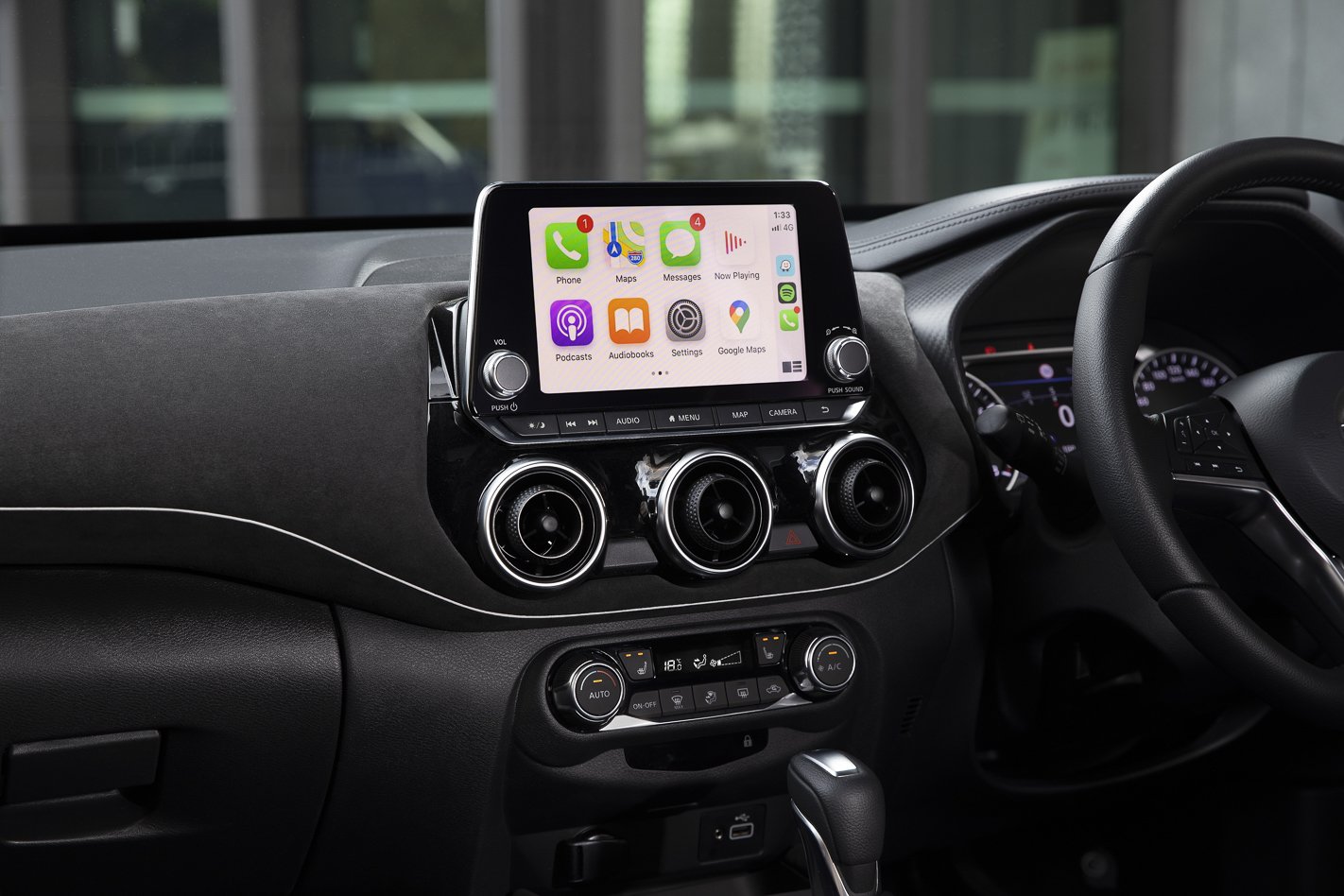
- Seven-speed dual-clutch automatic transmission.
- Cruise control and speed limiter.
- Active safety including autonomous emergency braking with pedestrian and cyclist detection, forward collision warning, lane-keeping assist, lane departure warning, blind-spot warning, and rear-cross traffic alert.
- Traffic sign recognition.
- Idle stop/start, which halts the engine while you’re stopped at traffic lights to save fuel.
- LED external lighting including head-lights, daytime running lights (DRLs) and tail-lamps.
- Dusk-sensing headlights and auto high beam.
- Heated and power-folding door mirrors.
- Paddle shifters on the steering wheel.
- Air-conditioning.
- Keyless entry, push-button engine start.
- Hill-start assist.
- Lumbar support for front seats.
- Six airbags: two directly in front of the driver and front passenger; side airbags to protect the upper body of front occupants; and head-protecting curtain airbags for front and rear occupants.
Which engine uses least fuel, and why wouldn’t I choose it?
The only engine available in a Juke is an 84kW 1.0-litre, three-cylinder turbo petrol, which consumes just 5.8 litres/100km according to official testing, which takes into account urban and country driving.
While this means fewer visits to the petrol station than some of its rivals, you will have to pay more at the pump with the little turbo requiring 95RON premium unleaded.
All versions come with a seven-speed dual-clutch automatic transmission that works much like a manual gearbox with robotic control. It shifts very smoothly and quickly and saves fuel, but cannot match the fluid take-off from rest that you get with conventional or CVT autos.
All Jukes are front-wheel drive.
What key features do I get if I spend more?
The entry-level Juke ST comes with 17-inch alloy wheels, manual air-conditioning, cloth sear trim, four-speaker sound system and all the features available in every Nissan Juke.
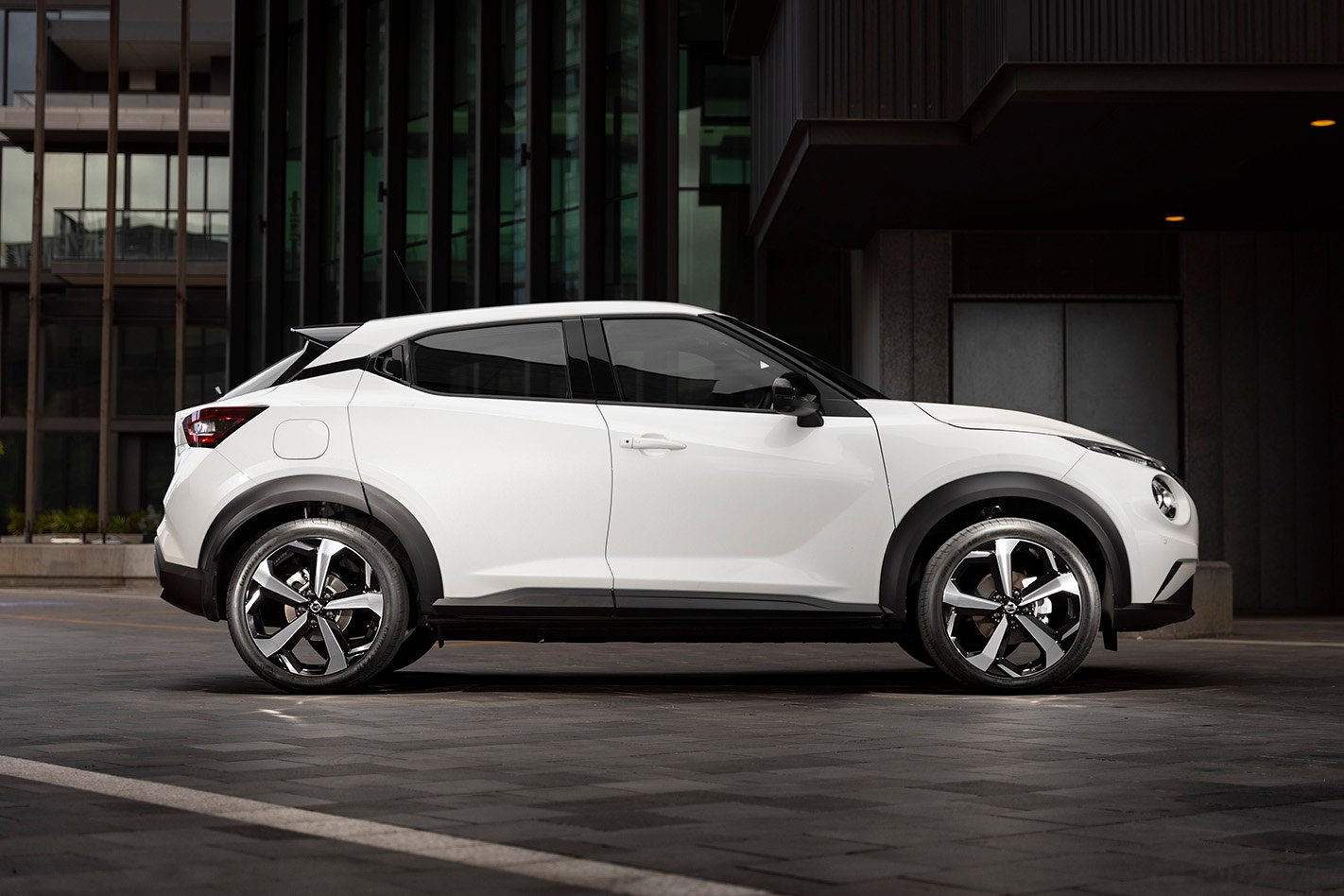
Stepping up to the Juke ST+ brings few desirable extras, including:
- In-built satellite navigation that doesn’t require a smartphone.
- Front parking sensors.
- LED fog-lights.
- Heated front seats.
- Climate control air-conditioning.
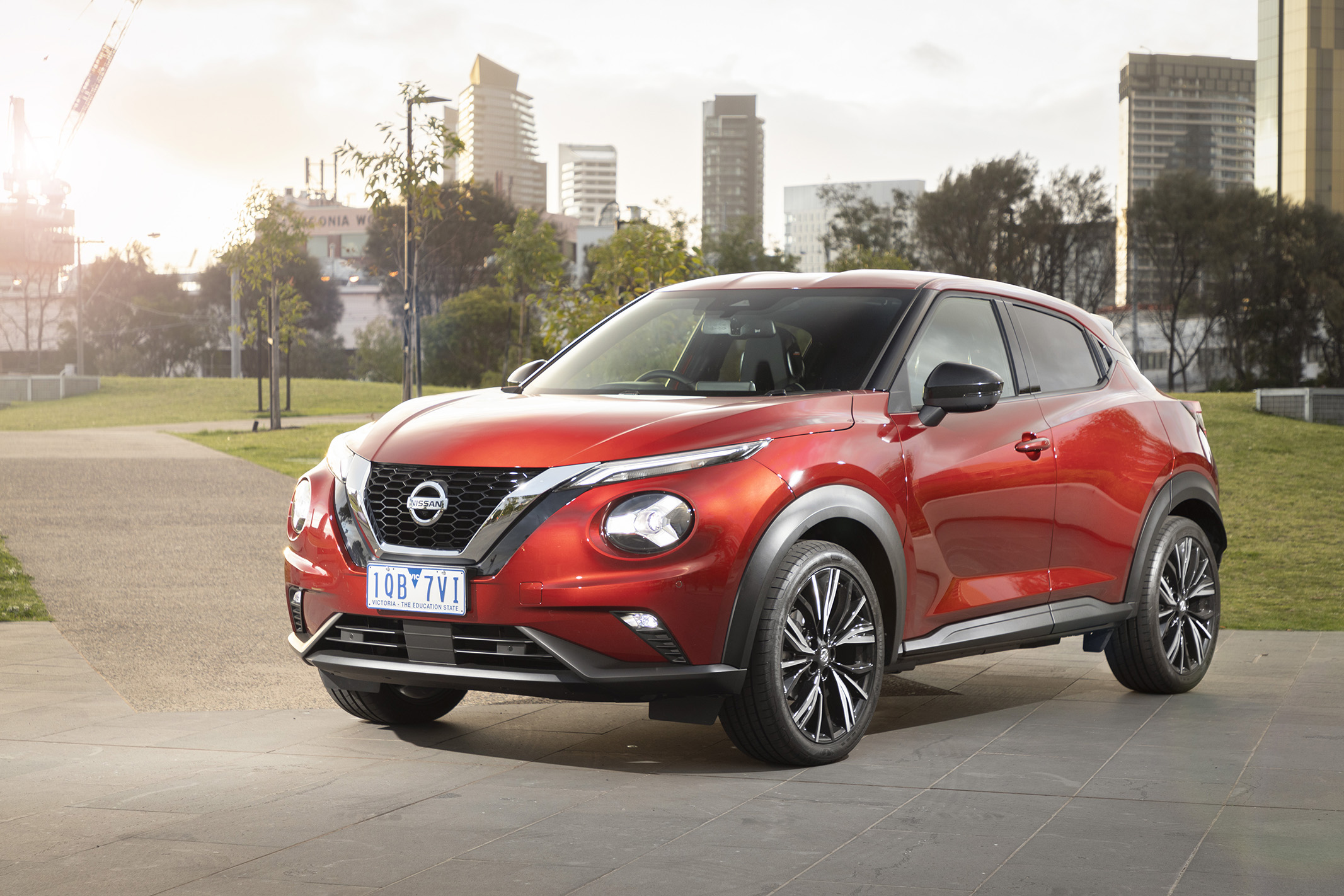
- Bigger 19-inch alloy wheels that look fancier and have lower-profile tyres for sportier handling.
- Interior ambient lighting.
- Adaptive cruise control.
- 360-degree parking monitor, with Moving Object Detection that warns if people or other vehicles around the car while parking or leaving a parking space.
- Rear USB port for charging.
- Six-speaker sound system.
- Eco/Standard/Sport drive modes.
- Electric park brake with auto-hold.
- Leather accented steering wheel and gearshift knob.
- Part cloth/leather seat trim
- Quilted accented leather and Alcantara seat trim.
- Alcantara dashboard, knee pad and door panels.
- Shark-fin antenna.
- Illuminated ‘JUKE’ entry kick plates.
- Eight-speaker Bose premium audio system.
- Tyre-pressure-monitoring system.
Does any upgrade have a down side?
The lower-profile tyres on ST-L and Ti’s 19-inch wheels ride more roughly and could cost more to replace.
How comfortable is it?
The second-generation Juke is considerably more attractive to look at than its predecessor, but still has enough quirky styling queues to set it apart from the bunch.
The interior is well put together and has a sense of quality to it. The dashboard is busy in the amount of information it attempts to convey, but it’s well presented. There’s a small but deep centre bin, big bottle holders in all four doors and a huge glovebox.
The only ergonomic fail is the lack of a wireless phone charger, and there isn’t a suitable place to put your phone while it’s plugged into a USB socket.
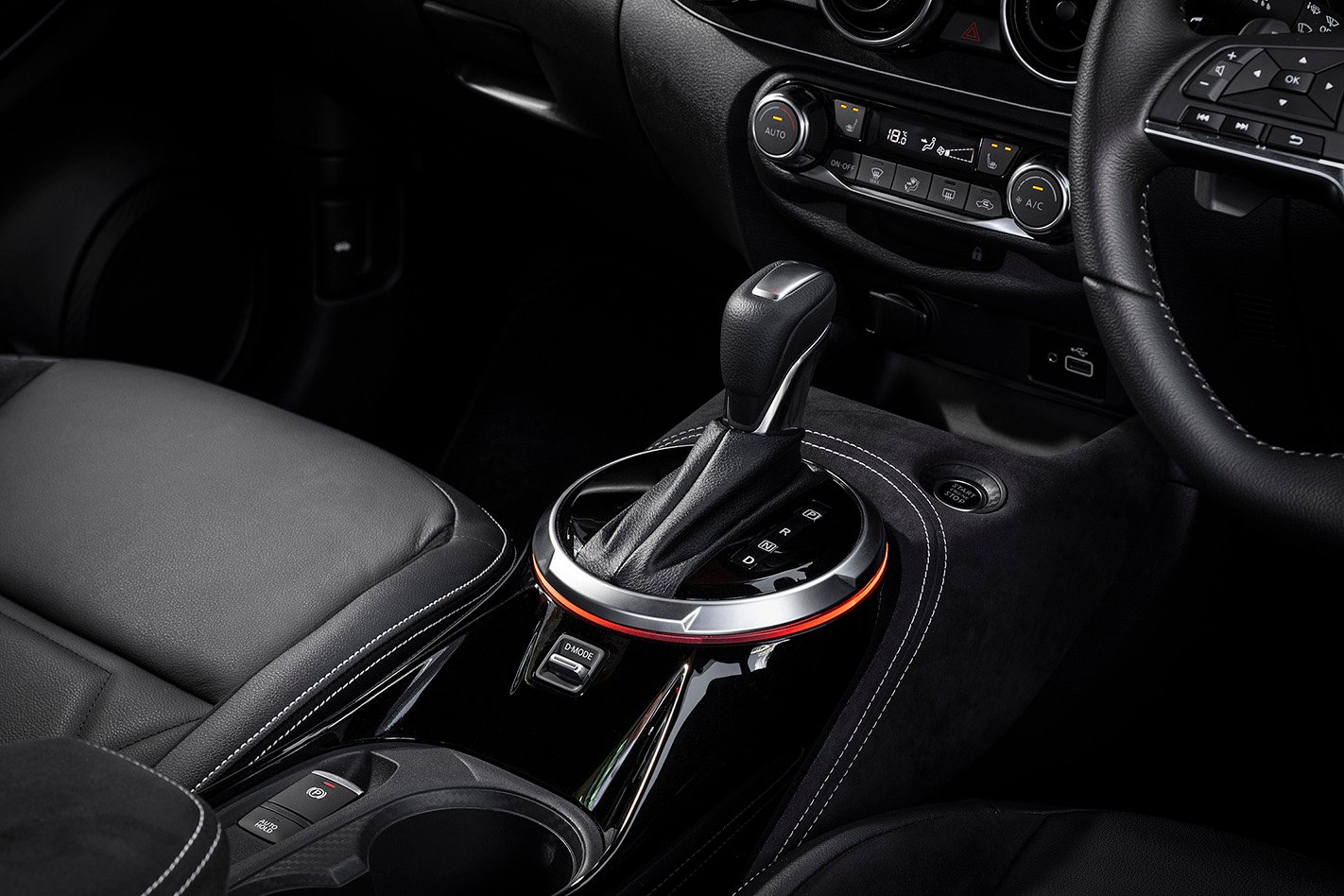
Stretching the wheelbase by more than 100mm compared to the previous model works wonders for interior packaging. This is a great choice for taller people because the manually-adjusted seats are positioned low in a cabin with an arcing roofline and no sunroof to impinge on headroom. The front seats are comfortable, particularly the chunky part-leather chairs in the upper-spec ST-L and Ti grades.
The bigger chassis is extremely well-supported, with a firmish ride and lovely body control.
It’s a reasonably quiet car. The engine makes a faint three-cylinder warble at idle, but the dominant sound at highway speeds is the wind rustle around the door mirrors.
What about safety?
Every Juke has the mandatory stability control, six airbags, seatbelt warnings for all five seats, and a rear-view camera. It is a package that prioritises your control of the car, your protection in a crash, and the safety of others when you are reversing.
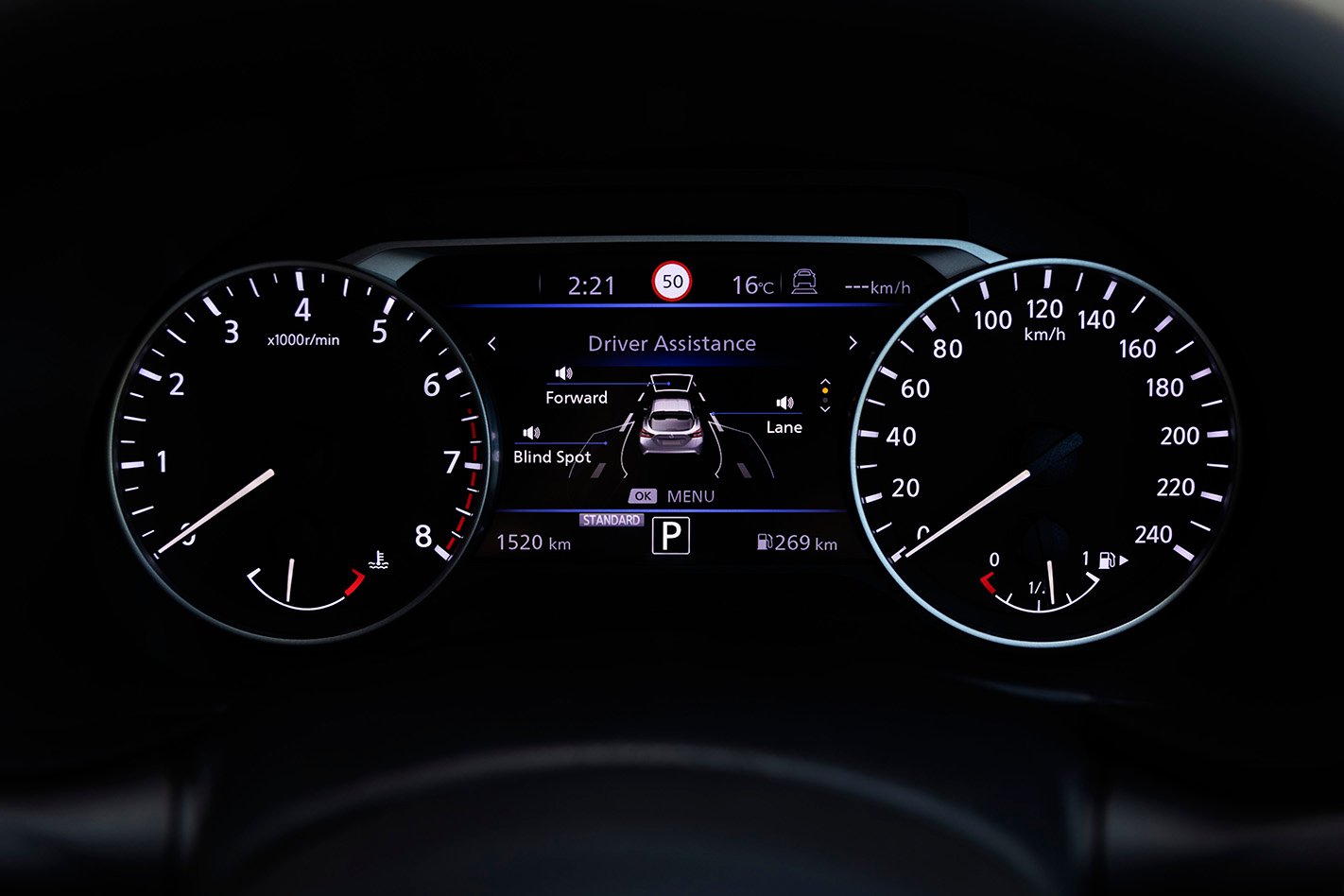
It is also one of the better equipped compact SUVs when it comes to standard active safety. Each version has autonomous emergency braking with pedestrian and cyclist detection, traffic sign recognition, rear-cross traffic alert, blind-spot warning, lane departure warning and lane-keeping assist, which Nissan calls Intelligent Lane Intervention.
Automatic LED headlights with High Beam Assist (which increases the field of visibility by 10 metres), a reversing camera, rear parking sensors are also standard.
The ST-L and Ti gain front parking sensors, 360-degree camera system, and ‘Moving Object Detection’ and adaptive cruise control.
The six airbags include driver and front passenger forward and side airbags, and front and rear curtain inflators.
The Australasian New Car Assessment Program (ANCAP) rated the Juke’s safety at five stars, its maximum, June 2020.
I like driving – will I enjoy this car?
The Juke’s 1.0-litre turbo engine produces 180Nm of torque that gives a decent amount of oomph off the line. Zero to 100km/h takes a little over 10 seconds, so it’s not particularly rapid, and that figure will be dulled still further with people on board. But the tiny turbocharger has ample power about town.
The chassis provides a firm but comfortable ride and great body control. The ride gets stiffer on the bigger 19-inch wheels under the ST-L and Ti versions, in which you’ll experience a bit of head-toss when you encounter a pothole or a bump on one side of the vehicle. The trade-off is good handling on bendy roads.

ST-L and Ti versions also have a drive-mode selector that can switch between Eco, Normal and Sport. Because all Jukes share the same passive suspension architecture, the Sport mode doesn’t affect ride quality and just gives the engine and gearbox the best opportunity to maintain revs. It also tightens the steering, which is welcome. You’ll find that you will click into Sport as a matter of course when shifting the gear lever to ‘D’.
How is life in the rear seats?
The 2020 Juke is 75mm longer, 35mm wider and 30mm taller than its predecessor which is most evident in the rear seats, which comfortably accommodate two adults. That additional knee room is compromised a little in the upper-spec ST-L and Ti versions, which have bulkier front seats.
The ST and ST+ have a 12v socket to plug in a charger, while the rear-seats in the ST-L and Ti have a dedicated USB port. Neither version has rear air vents.
The Juke has ISOFIX child seat anchors and tethers in the outboard seats and an additional tether in the centre.
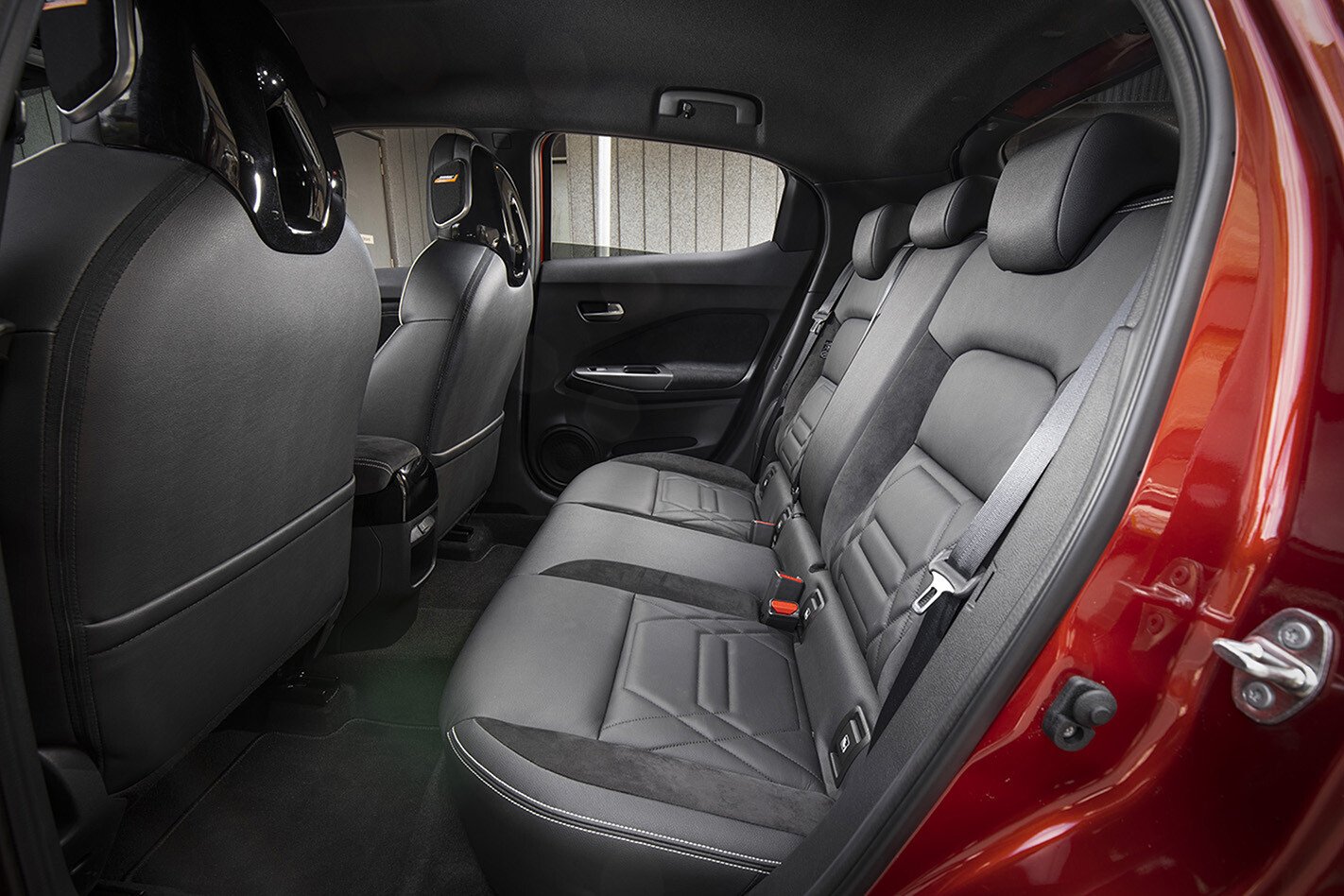
How is it for carrying stuff?
The new-generation Juke’s upsized dimensions naturally make it more practical. Boot space has grown from 354 litres to 422 litres, which is considerably more than the Mazda CX-3’s 264 litres or a Toyota C-HR’s 318 litres. Folding the rear seats down increases capacity to 1305 litres.
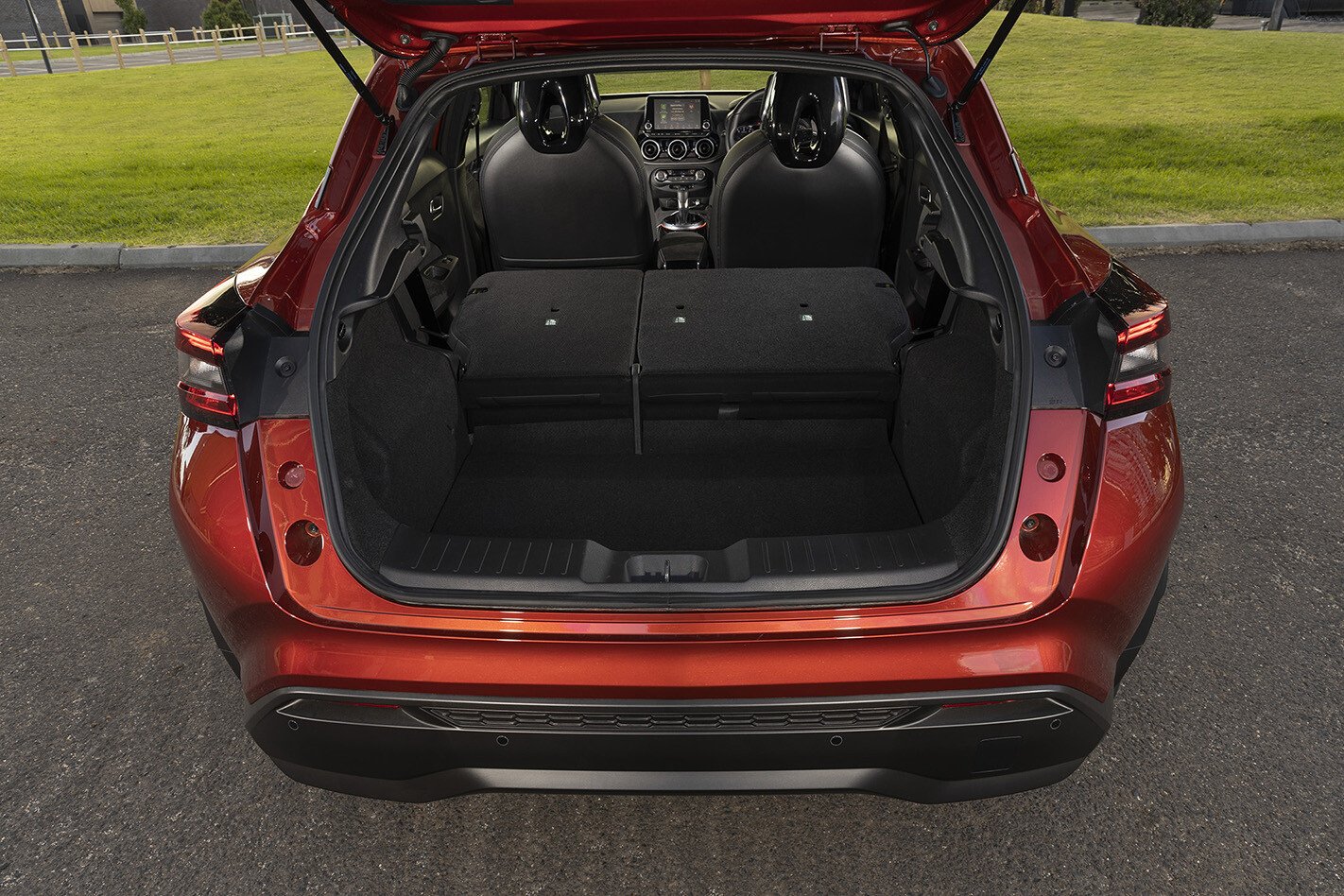
The boot aperture pretty tight, however, which can make it difficult to load bulky items.
The Nissan Juke has a handy 1250kg braked towing capacity.
Where is it made?
All Jukes are produced in the United Kingdom.
What might I miss that similar cars have?
The Juke is one of the newer and better equipped compact SUVs on the market so there isn’t too much that it misses out on compared to its rivals. A notable omission is the lack of an all-wheel-drive option, as available the Toyota C-HR, Hyundai Kona, Kia Seltos and Subaru XV.
Or you might want a bit more power as available with the above plus the Volkswagen T-Roc, Skoda Karoq, and Mazda CX-3.
I like this car, but I can’t choose which version. Can you help?
The cheapest Juke, the ST, shares the same powertrain and all the important active safety features as all the other versions making it good value for under $30,000.
That said, the ST-L brings an excellent suite of features for the price and we can see why Nissan Australia expects it to account for 50 percent of Juke sales here.
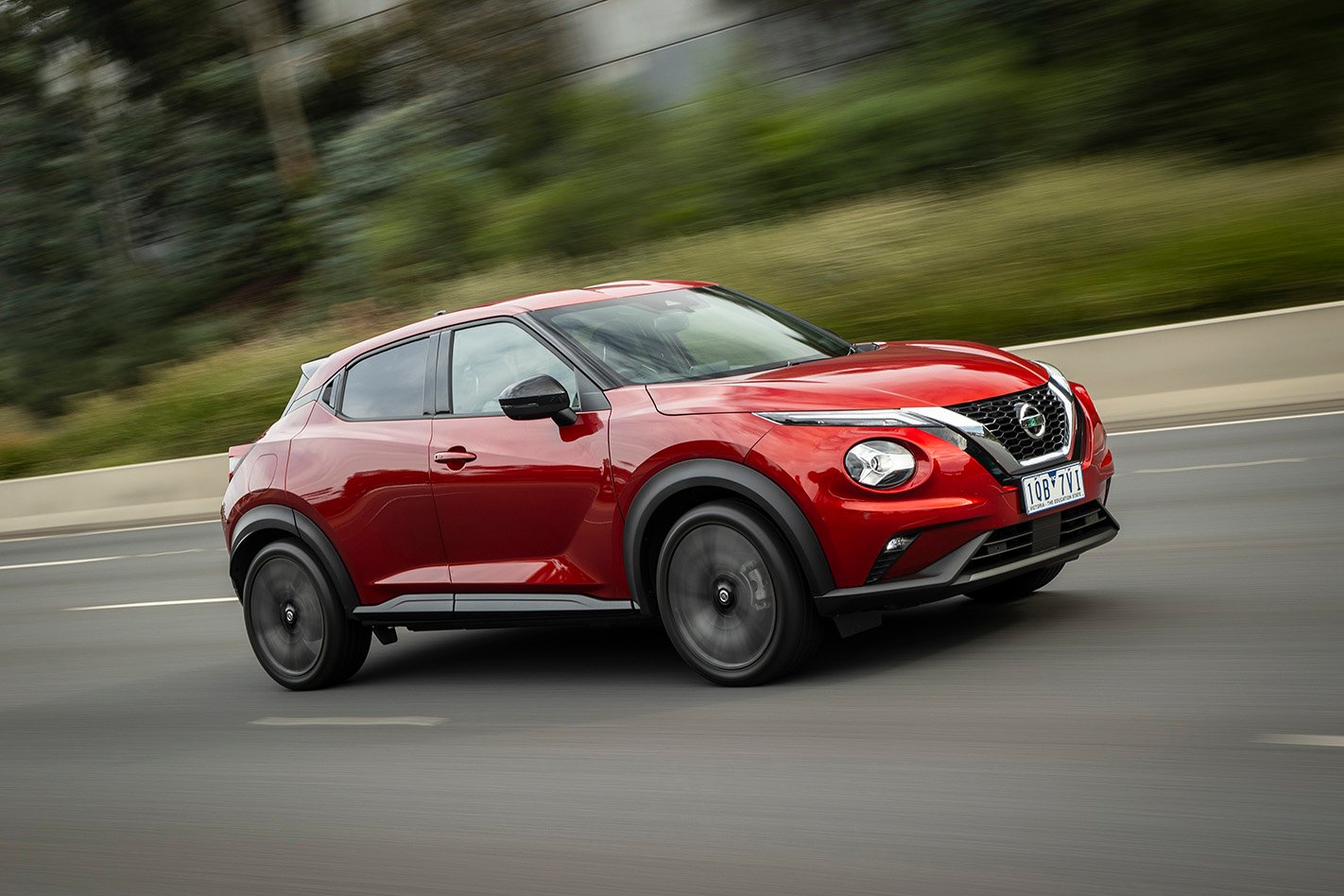
Are there plans to update this model soon?
The all-new Nissan Juke arrived in Australia in June 2020 so there are unlikely to be any updates until mid-2022.
There may be the odd special edition version before then.
Score breakdown
Things we like
- Standard equipment, big boot, fresh looks, fun handling
Not so much
- ST-L and Ti's bulky front seats limit rear space, dozy gearbox calibration



